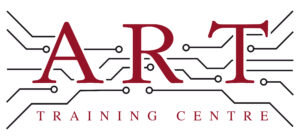Definition
Microvia is a small, plated hole in a printed circuit board (PCB) that connects different layers of the board. Typically measuring less than 150 micrometres in diameter, microvias are essential for creating compact and high-density electronic designs. They enable efficient routing of electrical signals and are a key component in advanced PCB manufacturing.
How It’s Used in the Industry
Microvias are used in the assembly of printed circuit boards (PCBs) to facilitate connections between layers. The process begins with designing the PCB layout, where microvias are strategically placed. During manufacturing, these microvias are drilled and plated to create conductive paths. In soldering, microvias allow for more efficient connections for surface mount components, improving overall performance. For technicians, understanding microvia technology is crucial, as it enhances both assembly techniques and troubleshooting skills. Experienced professionals rely on microvias to meet the demands of modern electronics, ensuring high reliability and compact designs.
History & Origins
Microvias became common in electronics manufacturing in the late 1990s, driven by the demand for smaller and more complex devices. The development of advanced laser drilling techniques allowed manufacturers to create these tiny vias efficiently. Standards like IPC-2226 were established to guide the design and implementation of microvias, ensuring quality and reliability. As technology evolved, microvias became integral to high-density interconnect (HDI) PCB designs, marking a significant shift in the industry towards more compact and efficient electronics.
Variations
There are two main types of microvias: blind and buried. Blind microvias connect outer layers of a PCB to inner layers, while buried microvias connect only inner layers, not reaching the outer surfaces. This distinction affects design choices and manufacturing processes. Additionally, microvias can be classified based on their aspect ratio, which refers to the ratio of depth to diameter. Understanding these variations is essential for learners, as they influence the performance and reliability of electronic devices.
Modern Applications
Today, microvias are widely used in the production of high-performance electronics, particularly in surface mount technology and advanced assembly methods. They play a vital role in ensuring compact designs and high signal integrity. Microvias are crucial for meeting IPC standards, which emphasise quality and reliability in PCB manufacturing. Their application extends to areas such as mobile devices, automotive electronics, and medical equipment, making them essential for modern electronic product development and repair.
Practical Tips & Training
When working with microvias, it’s essential to ensure accurate drilling and plating to maintain quality. Use specialised inspection tools, such as optical microscopes, to check for defects. Safety is also paramount; always follow proper procedures when handling chemicals used in PCB manufacturing. Structured training and certification in microvia technology are invaluable for technicians, enhancing their skills and understanding of advanced electronics, ultimately leading to better quality and compliance in their work.


